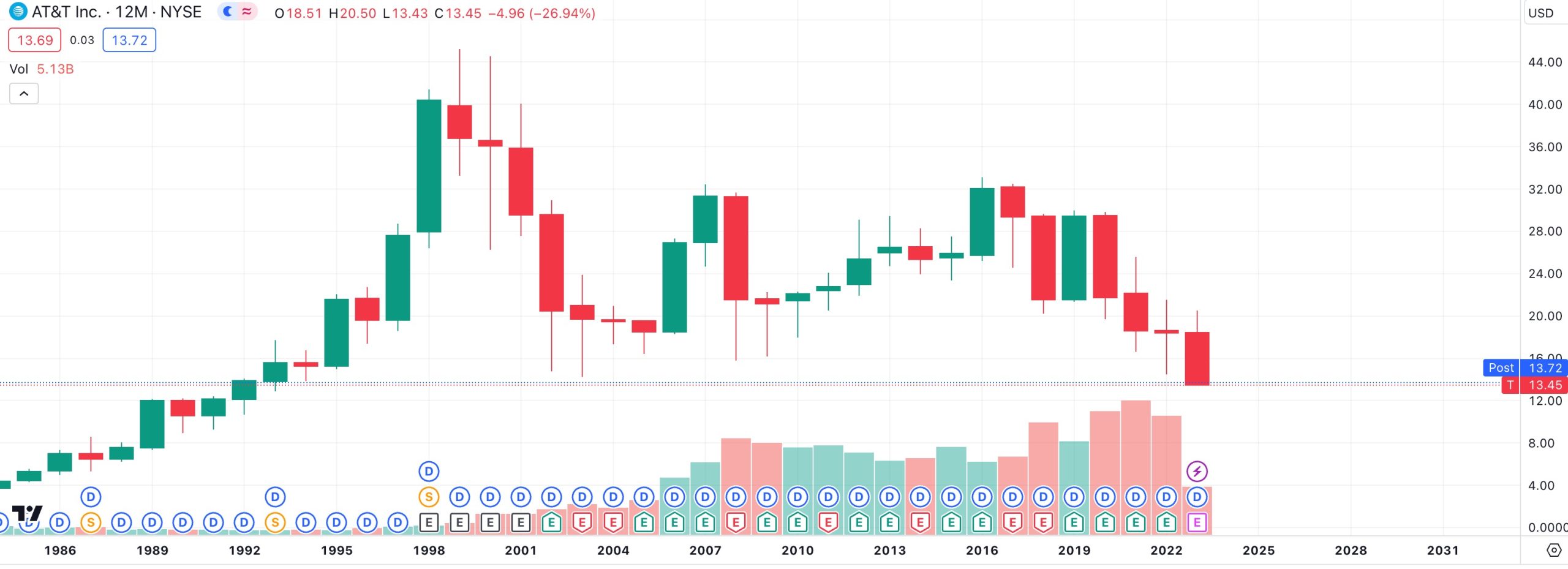Spotlight: Are You About To Lose A Fortune?
The turtle and hare game is so apt in investing. Why chase the fast bucks when slow and steady wins the race? Where investing gets tough is when the tortoise approach turns into a game of switcharoo, where you the investor gets the rug pulled on you. What am I talking about? Value traps, and more specifically dividend value traps.
Key Points
- High dividend yields can be value traps where the share price declines in % terms by more than the dividend yield.
- To spot a value trap, examine a company’s balance sheet and debt/equity ratio in particular.
- If the payout ratio is high, and the dividend yield is high it suggests management may be short-term vs long-term focused.
How To Spot A Trap
For our case study, we’re going to choose AT&T, which has beckoned income-oriented investors like the sirens in the Odyssey luring sailors to their death with beguiling songs.
What made AT&T so enticing for much of its history is its sky-high dividend. Even today, that dividend sits above 8%. To be precise, it’s 8.25%, well above the “risk-free” money market rate of 5%. It’s easy to see why a retiree who has squirreled away a million dollars could be tempted to bet the farm on a company that pays $82,500 per year.
But all that glistens is not gold, and that’s very much the case for AT&T. Look no further than its stock chart going all the way back to the 1990s to see the perilous trip investors have taken.
The last time the stock hit recent levels was all the way back in 1992. Oh, the horror!
AT&T has clearly been a value trap where investors buy the dividend yield but get bamboozled by the share price declines more than offsetting the yield.
The two big elephants in the room for AT&T for years has been an excessive debt load and an inordinately high payout ratio.
The company has a market cap of around $96 billion but almost 3x that amount in debt burden, whether long term debt, capital leases, or other non-current liabilities. Essentially the company is borrowing money to (over)pay shareholders.
You might wonder why doesn’t management cut the dividend so the sustainability of the dividend is preserved?
Dividend Cuts Hurt Share Price
In fact, that’s precisely what AT&T did in 2022. The dividend was slashed as part of its spinoff of WarnerMedia. The $2.08 per share dividend was chopped to just $1.11.
The problem with that is so many shareholders held the stock for the dividend that, when it got slashed, they jumped ship and sold. And so the share price of AT&T stock fell to reflect the new status quo.
Soon, the share price fell to a level where the new dividend yield was approaching the old dividend yield, before the per share dividend was cut. In short, the share price fell dramatically.
And so management is in a catch-22 scenario. The more they cut the dividend to preserve it long-term, the more the share price falls to reflect the new reality that forecasted income has been lost.
So how do you avoid these value traps?
(1) If the company has a debt/equity ratio north of 1 and certainly above 2, be wary if the dividend yield is high, above 5%.
(2) If the company has a payout ratio north of 50%, be skeptical that it’s making smart long-term decisions. Too much is being paid to shareholders versus re-investing in the future of the company.




